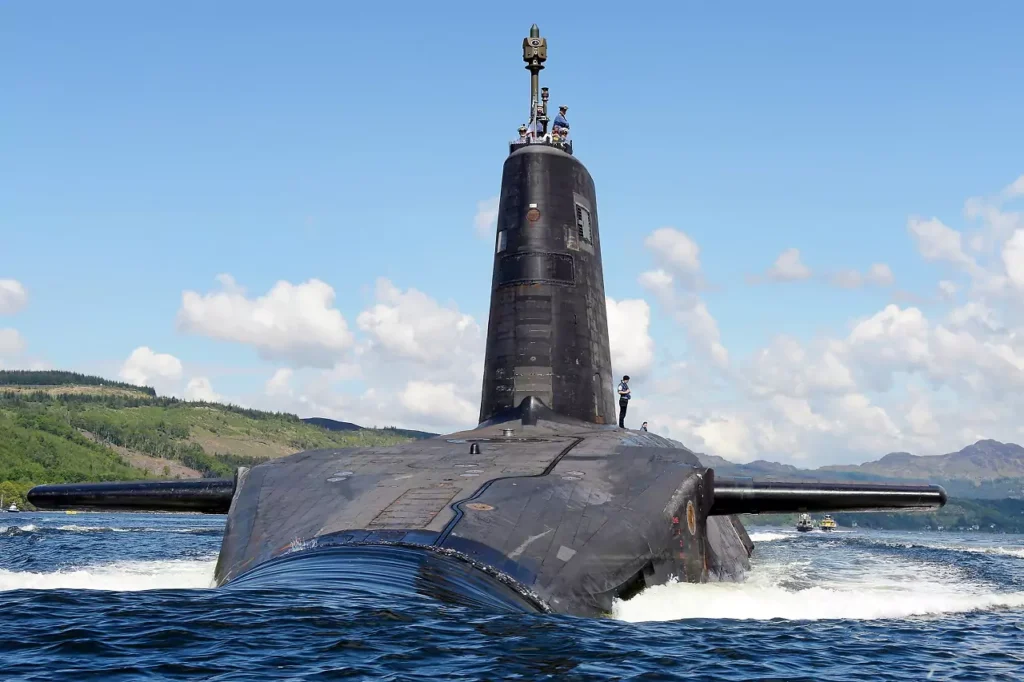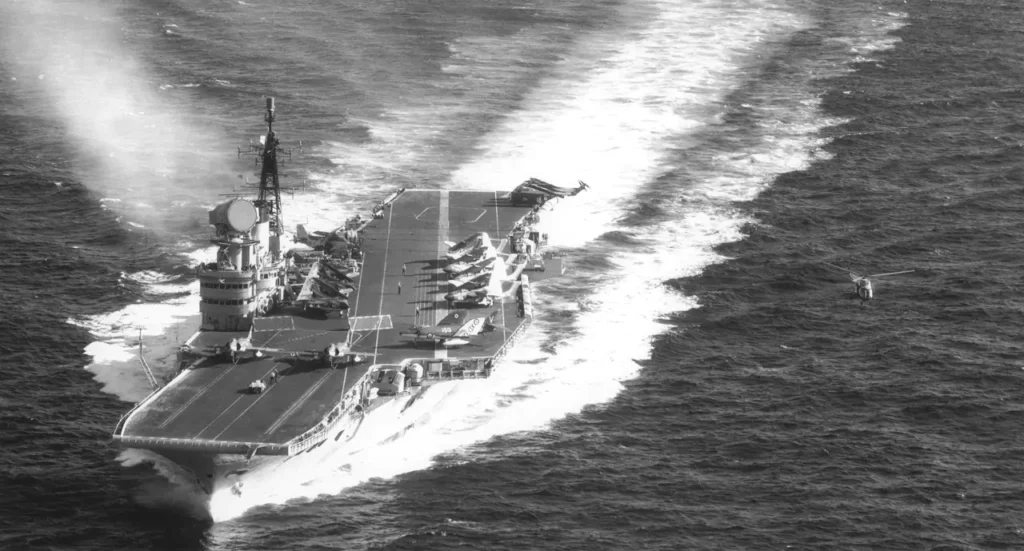Introduction
HMS Victorious is the second ship of the Royal Navy’s Vanguard-class Trident ballistic missile submarines. Constructed by Vickers Shipbuilding at Barrow-in-Furness, she was commissioned into service on 7 January 1995.
Victorious successfully launched her first Trident D5 missile off the coast of Florida on 24 July 1995. She commenced her first Trident operational patrol exactly one year after her commissioning, on 7 January 1996.
Victorious is currently based at The Royal Naval Base at Faslane, Scotland, which serves as the homeport for Britain’s four Vanguard-class SSBNs. Other ships in this class include HMS Vanguard, HMS Vigilant, and HMS Vengeance.
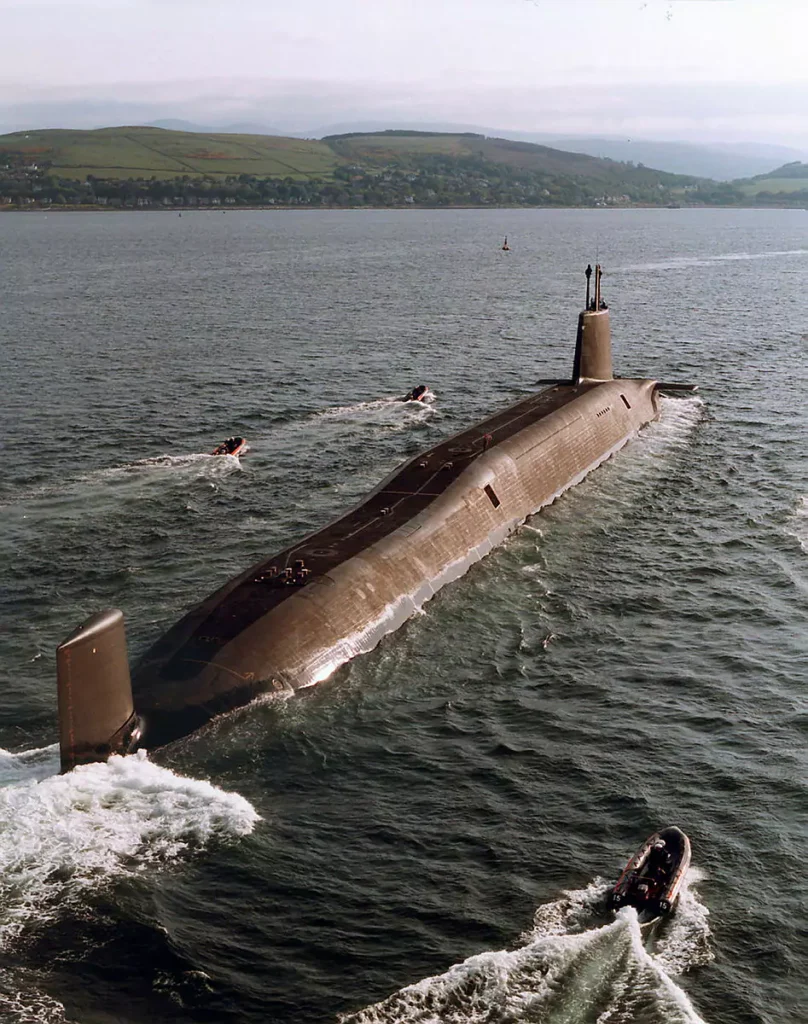
These submarines carry sixteen Trident II (D-5) submarine-launched ballistic missiles. Each missile is equipped with multiple independently targeted re-entry vehicles (MIRVs), each capable of delivering a destructive yield of 100 kilotons.
Namesake
The name HMS Victorious holds significant naval heritage, carried by several distinguished Royal Navy vessels over nearly two centuries.
The first HMS Victorious, a third-rate ship of 1,659 tons, launched at Blackwall on 27 April 1785. She saw action during the capture of the Cape of Good Hope in 1795. In 1796, alongside HMS Arrogant (74 guns), Victorious engaged a French squadron of frigates off northern Sumatra. After serving for eighteen years, Victorious was dismantled at Lisbon in 1803.
The second Victorious, a 74-gun ship weighing 1,724 tons, launched at Buckler’s Hard in October 1808. She participated in the Walcheren expedition of 1809. On 22 February 1812, Victorious engaged and captured the French 74-gun Rivoli in a notable single-ship action near the Gulf of Trieste. Converted into a receiving ship by 1835, she remained in service until broken up in 1868.
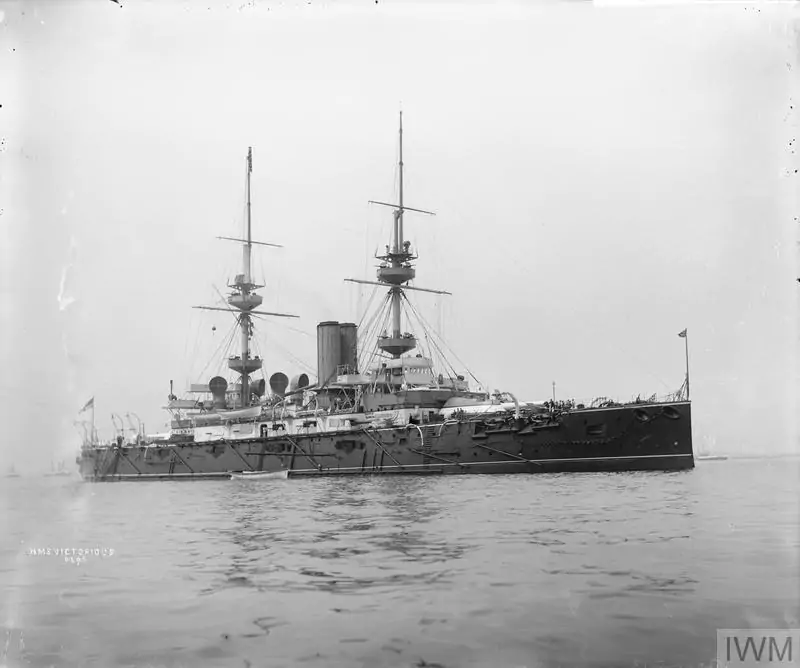
The third HMS Victorious was a Majestic-class battleship launched at Chatham Dockyard on 19 October 1895, weighing 14,900 tons. In 1898, while en route to China via the Suez Canal, she grounded near Port Said but resumed her voyage after being lightened. By 1919, Victorious served as a dockyard repair vessel, concluding her service when sold for scrapping in 1923.
The fourth and most notable vessel to bear the name was the Illustrious-class aircraft carrier HMS Victorious. Built by Vickers-Armstrongs, she entered service in 1941 and rapidly saw significant action in World War II. Aircraft from Victorious famously attacked the German battleship Bismarck at night, achieving a long-distance hit.
Victorious’ aircraft also participated in reconnaissance and attacks against the Tirpitz, though the extent of damage inflicted remained uncertain. In coordination with HMS Furious, her planes successfully destroyed an entire enemy convoy off Norway.
During her deployment to the Pacific theater, Victorious endured kamikaze attacks, necessitating repairs in Australia. After the war, from 1950 to 1958, Victorious underwent extensive modernization, emerging as the Royal Navy’s most advanced aircraft carrier. Equipped with an angled flight deck, she was capable of operating modern jet aircraft.
Further refits followed in 1960 and again in 1967. A severe fire during the 1967 refit led to the decision not to recommission Victorious. She was ultimately sold for scrap in 1969.
Official Badge
The official badge of HMS Victorious features a red field. At its center is a depiction of a winged female figure clothed in white, raising her hands to support a white laurel wreath. This badge symbolizes victory, directly alluding to the ship’s distinguished name and historical achievements.
Specifications
The Vanguard-class submarines are the largest ever built for the Royal Navy, each measuring 150 meters in length with a displacement of 15,900 tonnes when submerged, making them more than twice the size of a Boeing 747 jumbo jet.
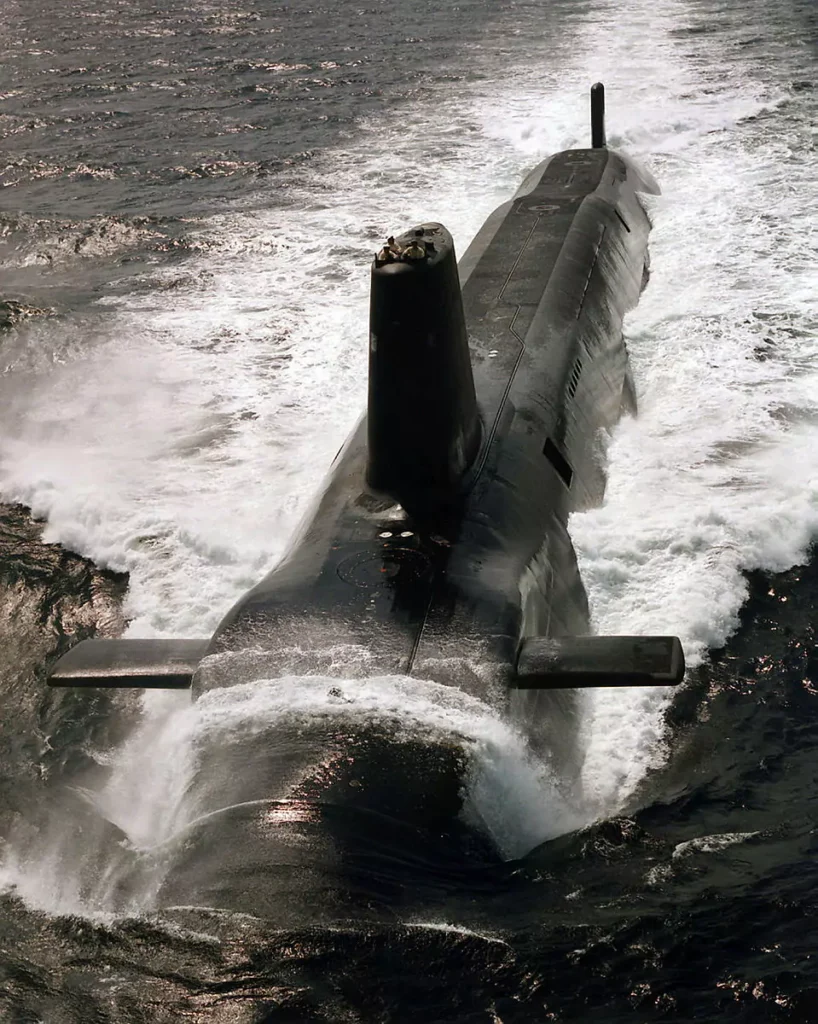
They are powered by a Rolls-Royce PWR2 nuclear reactor, utilizing seawater to produce steam that propels these vessels through the water at speeds exceeding 25 knots. Each submarine is assigned two crews, known as Port and Starboard, to facilitate regular rotations, rest, and training periods.
Each Vanguard-class submarine is armed with 16 launch tubes, capable of housing the advanced three-stage solid-fuel Trident D5 submarine-launched ballistic missile (SLBM).
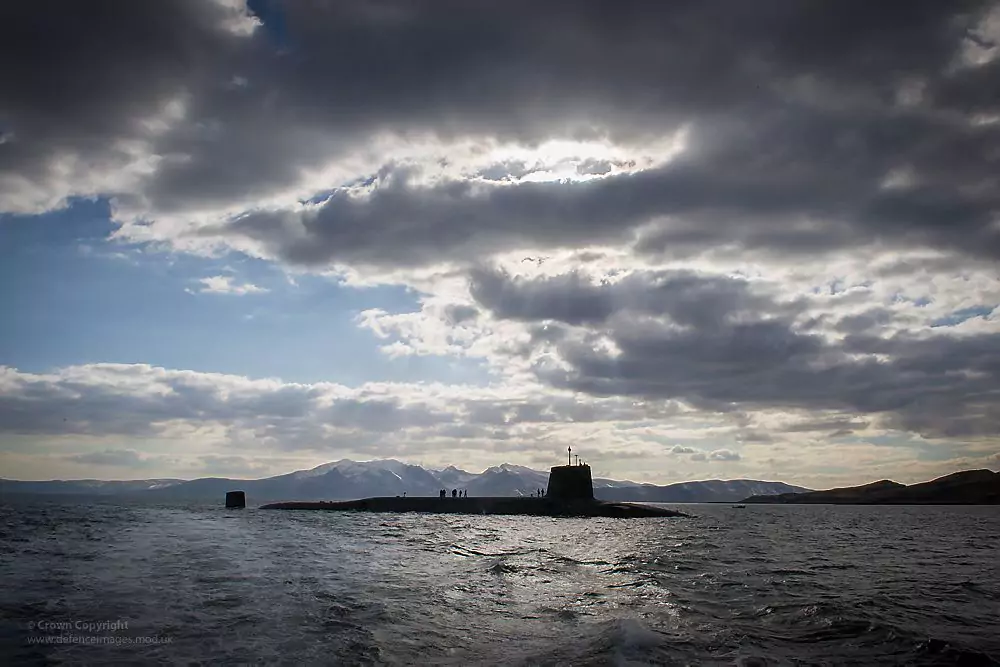
Each missile measures approximately 13 meters in length, 2 meters in diameter, and weighs around 60 tonnes. The Trident D5 missile has an operational range of between 6,500 and 12,000 kilometers, with an accuracy reflected by a circular error probable (CEP) of approximately 90 meters.
Construction & Commissioning
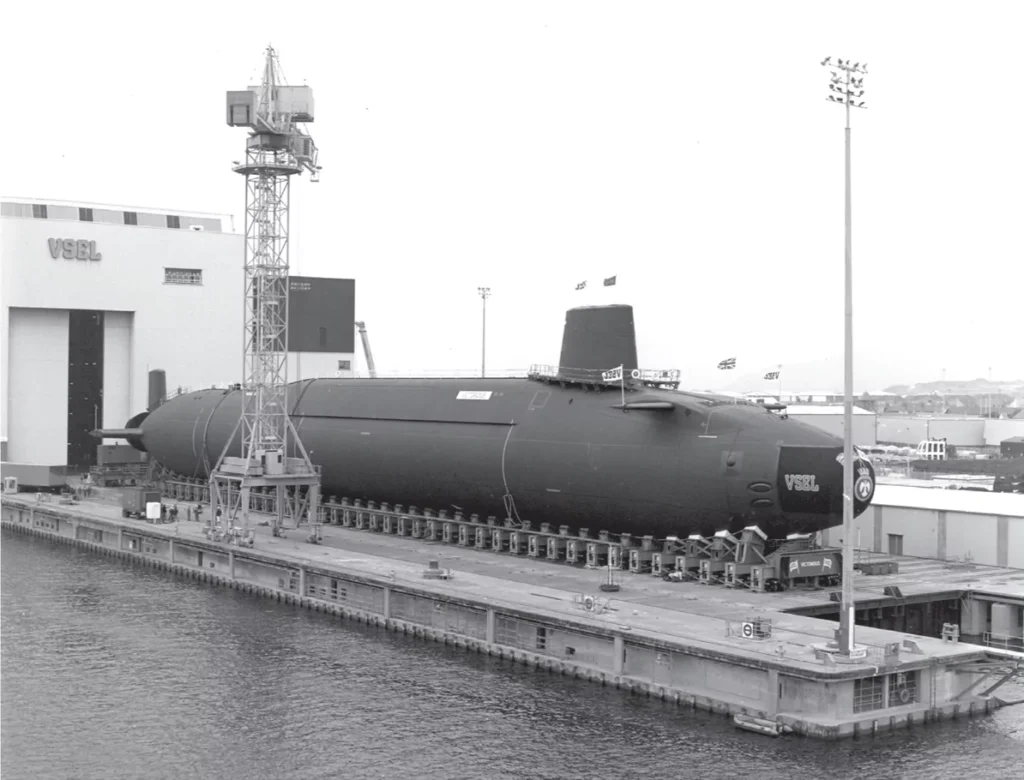
- Builder: Vickers Shipbuilding & Engineering (VSEL), Barrow-in-Furness, England.
- Cost: £ 425 million.
- Ordered: 6 October 1987
- Keel laying ceremony: 3 December 1987
- Launched: 29 September 1993
- Sea trials start: December 1994
- Commissioned: 7 January 1995
Service
- 24 July 1995 – HMS Victorious launched her first Trident D5 missile off Florida.
- 7 January 1996 – HMS Victorious sailed on her first Trident operational patrol.
- 3 April 2013 – HMS Victorious completed the Royal Navy’s 100th Vanguard-class deterrent patrol.
Assignments
| Dates | Unit | Location |
|---|---|---|
| 7 January 1995 - Present | 1st Submarine Squadron (SM1) | Clyde Submarine Base, Faslane |
Overhauls
HMS Victorious is currently undergoing a Life-extension refit on Devonport. The list of refueling overhauls and major maintenances received by HMS Victorious is the following:
| Location | Start | End | Comments |
|---|---|---|---|
| HM Naval Base Devonport | April 2005 | May 2008 | Long Overhaul Period and Refuel (LOP(R)) |
| HM Naval Base Devonport | May 2023 | - | Life-extension (LIFEX) |
Missile Launches
British submarines conduct their missile flight tests at the U.S. Eastern Test Range, located off the coast of Florida. Demonstration and Shakedown Operations (DASO) are designed to rigorously test and certify the readiness of the crew, equipment, and the missile system for operational service.
The following table displays the missile fired by HMS Victorious:
| # | Date | Type | Missile | Status |
|---|---|---|---|---|
| 1 | 24 July 1995 | DASO | Trident D5 | Successfull |
| 2 | 22 August 1995 | DASO | Trident D5 | Successfull |
| 3 | 26 May 2009 | DASO | Trident D5 | Successfull |
Photo Gallery
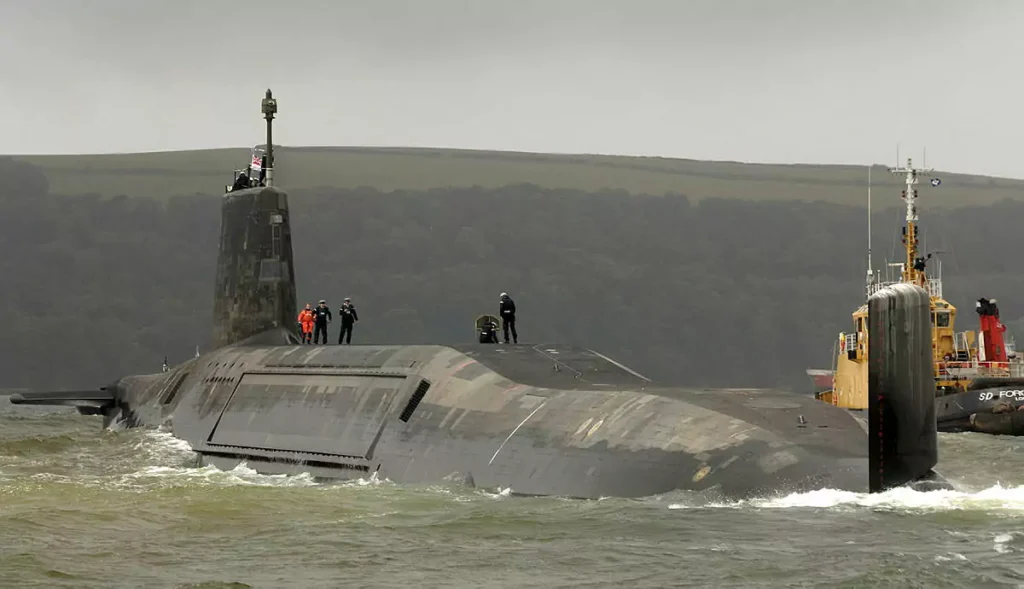
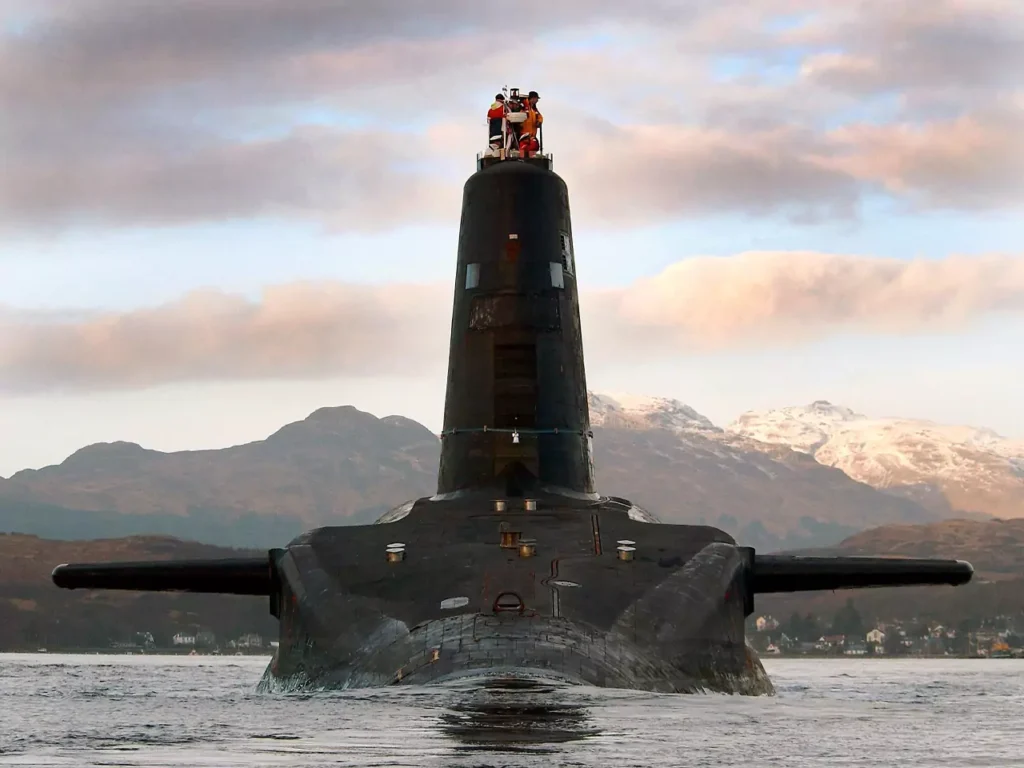
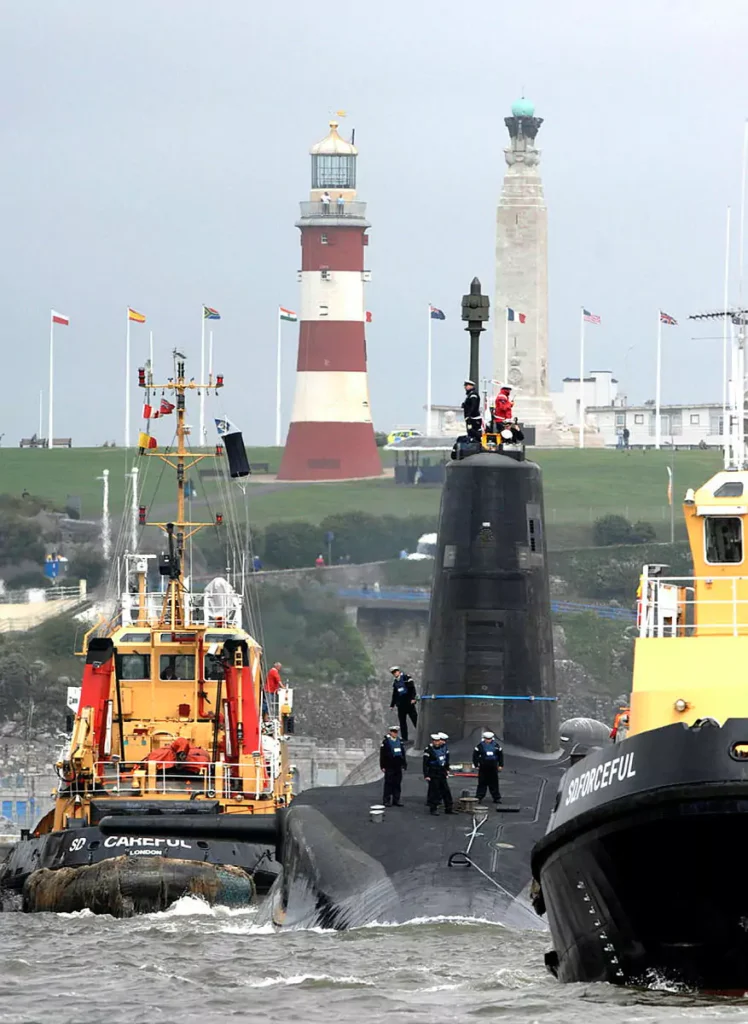
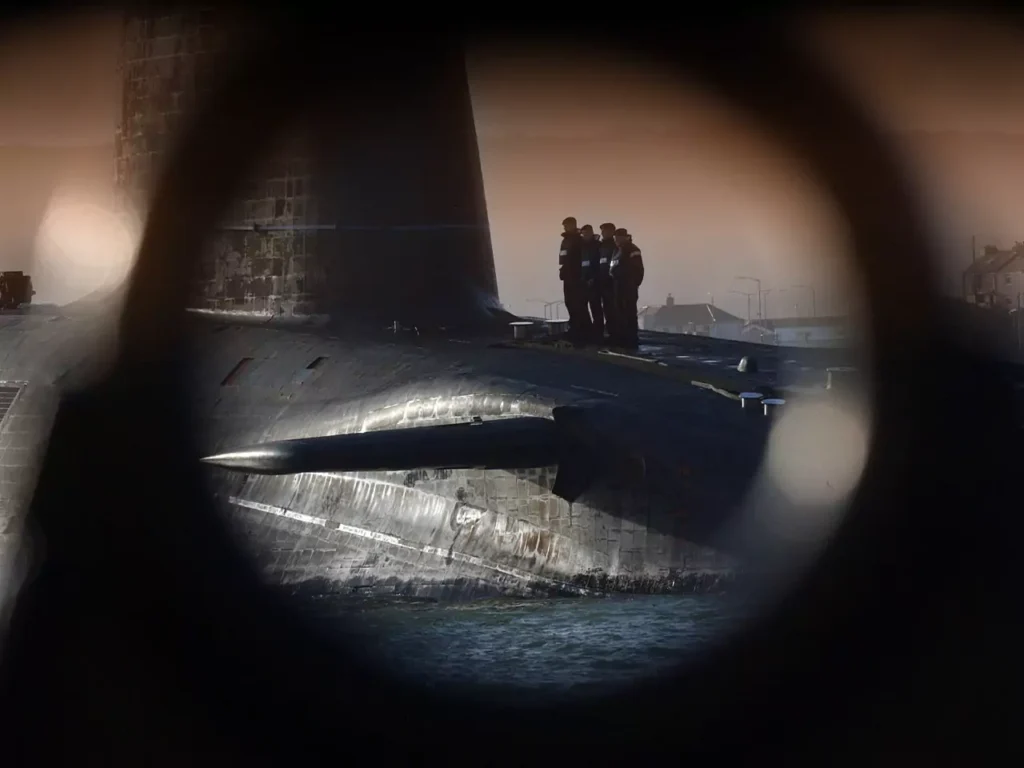
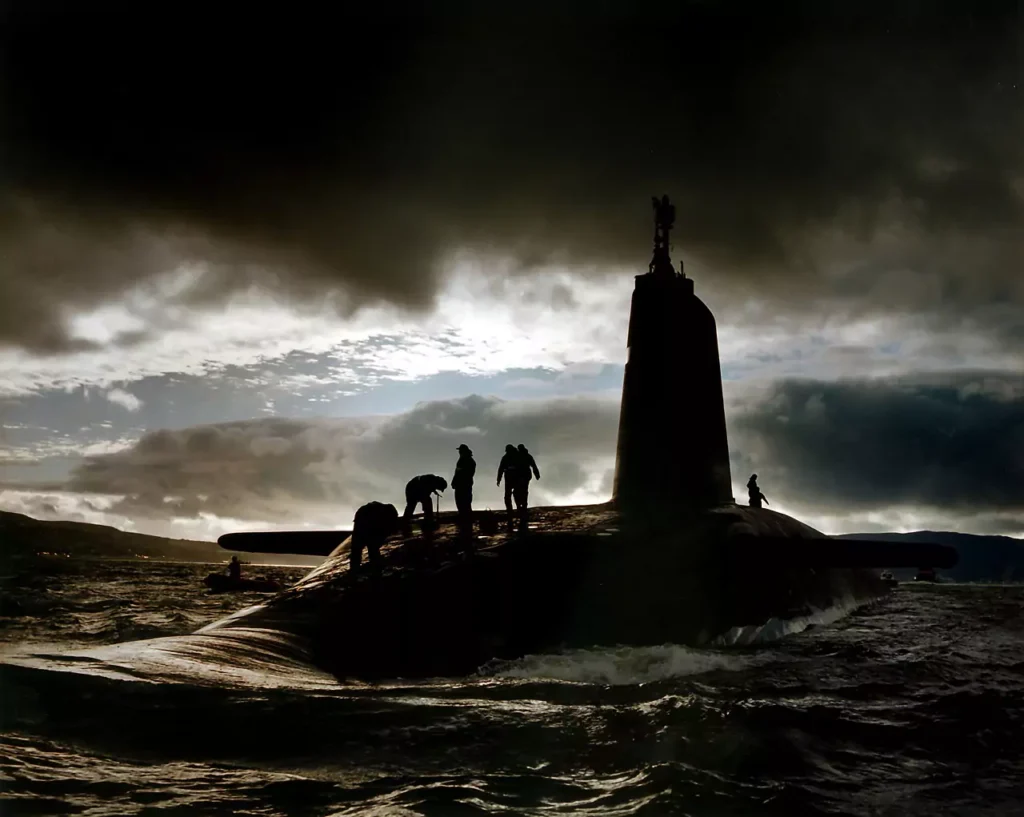
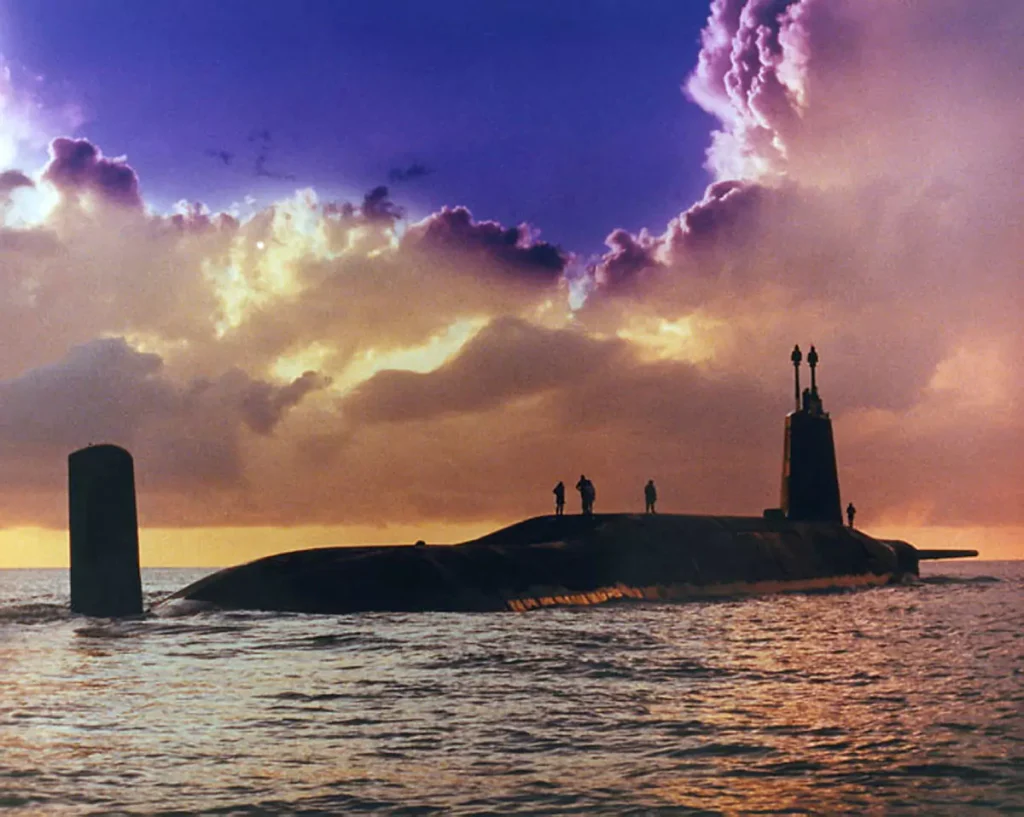
Further Reading
- Vanguard Class of Ballistic Missile Submarines
- Trident II D-5 (UGM-133A)
- 1st Submarine Squadron (SM1)
- 1st Submarine Squadron (SM1)
Other ships of the class:
Bibliography
- Saunders, S., Philpott, T. (2015). Jane’s Fighting Ships 2015 2016: Yearbook. United Kingdom: Ihs.
- Friedman, N. (2020). British Submarines in the Cold War Era. United Kingdom: Pen & Sword Books.
- Jinks, J., Hennessy, P. (2015). The Silent Deep: The Royal Navy Submarine Service Since 1945. United Kingdom: Penguin Books Limited.
- Burns, K. V. (1986). Badges and Battle Honours of HM Ships. United Kingdom: Maritime Books.
